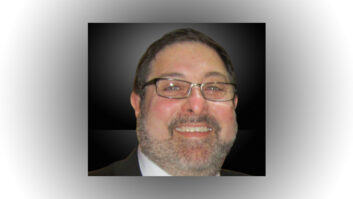The author is former engineer of WLS(AM). He is now retired.
Tom King of Kintronic Labs wrote in Radio World, “Let’s Save a Vital National Media Resource: AM Radio.” He is right on in his proposal and solutions. If anyone would know the answers, Tom would. Even accomplishing half of the suggestions would make a change for the better.
The only problem is the ship has sailed.
Granted, the AM quality improvement issues are significant but not compelling. But the FCC has done the AM band many disservices over the years:
1) Part 15 noise (there is no way to get the noise genie back into the bottle, with too many devices out)
2) too many stations
3) approving IBOC
4) dropping the clear-channel status
5) ratchet clause
6) no receiver specifications
7) AM expanded band
And on and on. The AM band broadcasters should get a refund on their annual spectrum fees they have paid! All the FCC needs is a mirror to see what has happen to the band and what is wrong.
The major-market coverage stations will survive. As an example, CBS WBBM(AM/FM) Chicago is drawing down $42 million out of its market with a simulcast signal (data here is based on Robert Feder’s article “Inside Chicago Radio’s Cash Register,” January 2014). How can that be if AM is a dead band? And six more Chicago AMs are pulling a total of $86 million gross billing among them. For these major-market AMs, life is good, with a combined income of $128 million dollars. No band problem for these major-market AM stations.
On the other hand, the Chicago rim AMs are probably pressing hard to pay the electric bill. Drop down the grid to regional and local and the party is mostly over for them.
In the grand scheme the AM auditorium is an empty room and the audience is not returning. The public at large has bought their iPhone, iPod or you-name-it Wi-Fi devices, and they are happy. Programming is not compelling, people have invested in personal devices at a near one-to-one ratio, and they are fully absorbed in those devices. Users are walking into light poles, driving off the road and monitoring them 24×7, sleeping with them on. Car manufacturers are dropping AM radio sections, as they can’t or won’t spend the money to get the car’s computer noise under control, and are putting in Wi-Fi hot spots for the sizzle.
With an automotive Wi-Fi device, Bluetooth-to-car sound system and streaming, you can make contact with 10,000 choices. Why would you bother with terrestrial or pay for satellite radio when your hot spot can fill your needs?
Terrestrial broadcasting is a sinking ship. The terrestrial broadcasters themselves tell you go to their website. What does that say? Terrestrial radio and Sirius XM are riding the USS Titanic into the ice field full ahead and should be handing out the life jackets. It’s a death by a thousand cuts.
Emergency alerts should be moved off the backs of terrestrial and onto cellular carriers for text alerts. Radio/TV/cable are long-form alert information. In a loss of power you have less that 12 hours left on Internet connections and then only wireless terrestrial radio will be your contact, as they too fade away with loss of power and generators run out of fuel.
The U.S. public is living in a dream world. The listening public does not care what AM issues are, there are too many other higher-quality alternatives.
Comment on this or any story. Email [email protected]with “Letter to the Editor” in the subject field.







